As all cattle farmers know, the volatility of feed and beef prices can make profitability a challenge in any given year. To get the best returns on feed costs, it’s important to maximize the weight gains for every pound of feed.
Creep feeding has become one of the most popular ways to boost calf weights, supplement poor forage, and help young cattle transition to grain feeds. This guide will provide answers to some of the most popular questions around creep feeding calves.
Contents
What is Creep Feeding?
Although creep feeding has been around for a long time (at least since the 1870s), it’s still a new term for some folks. Creep feeding is a method of providing supplemental feed (usually grain-based) to unweaned livestock. Creep feeding is most commonly used when raising beef calves, although it is sometimes also used with pigs, goats, and sheep. A purpose-built creep feeder or creep gates are used to allow the young animals to access the feed or feeding area, while keeping the larger animals out.
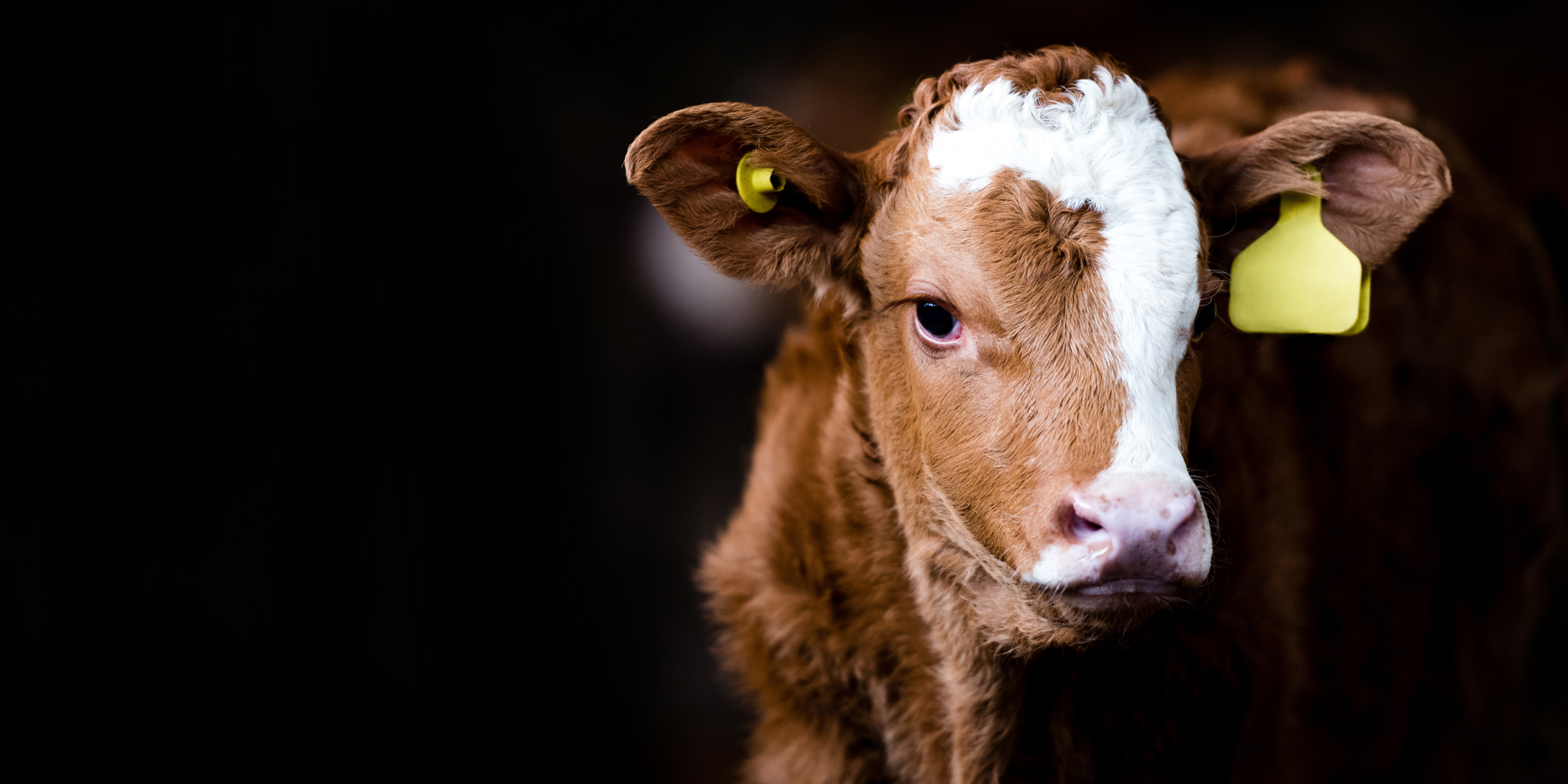
Purpose of Creep Feeding
What are the benefits of creep feeding calves?
Depending on which farmer you talk to, you might hear a number of different reasons given for why they creep feed their calves. In general, the goal of creep feeding is to help calves reach their full genetic growth potential in a cost-effective way that keeps the feeding operation profitable.
Creep feeding may cover for deficiencies in other sources of calf nutrition (milk and forage) or simply add to those other nutrition sources for even higher weight gains.
There are several specific situations where creep feeding calves can be particularly beneficial.
Creep feeding calves during the weaning transition
One of the primary reasons for creep feeding calves is to help ease their transition from a milk-based to a grain-based diet.
For the first few months after calves are born, their digestive systems do not contain the bacteria necessary to digest grains or forage. Even as grains are introduced into their diets, calves will require at least 2 to 3 weeks for the bacterial population in their digestive tract to grow large enough to efficiently digest the grain.
Adding small amounts of grain to a calf’s diet helps to lower the stomach’s pH levels, which allows digestive bacteria to begin growing. Additionally, it stimulates the growth of the rumen papillae, small projections in the rumen which increase its surface area and help with nutrient absorption.
In addition, creep feeding calves can help to reduce their stress levels when they transition to the feedlot. Calves that are familiar with eating from a creep feeder will usually adjust better to eating from a feed bunk and may see a better immediate performance in weight gains from the feeding program.
Overall, creep feeding calves while they still have access to their dams can make them more efficient at digesting grain feeds and help them maximize weight gains immediately after weaning.
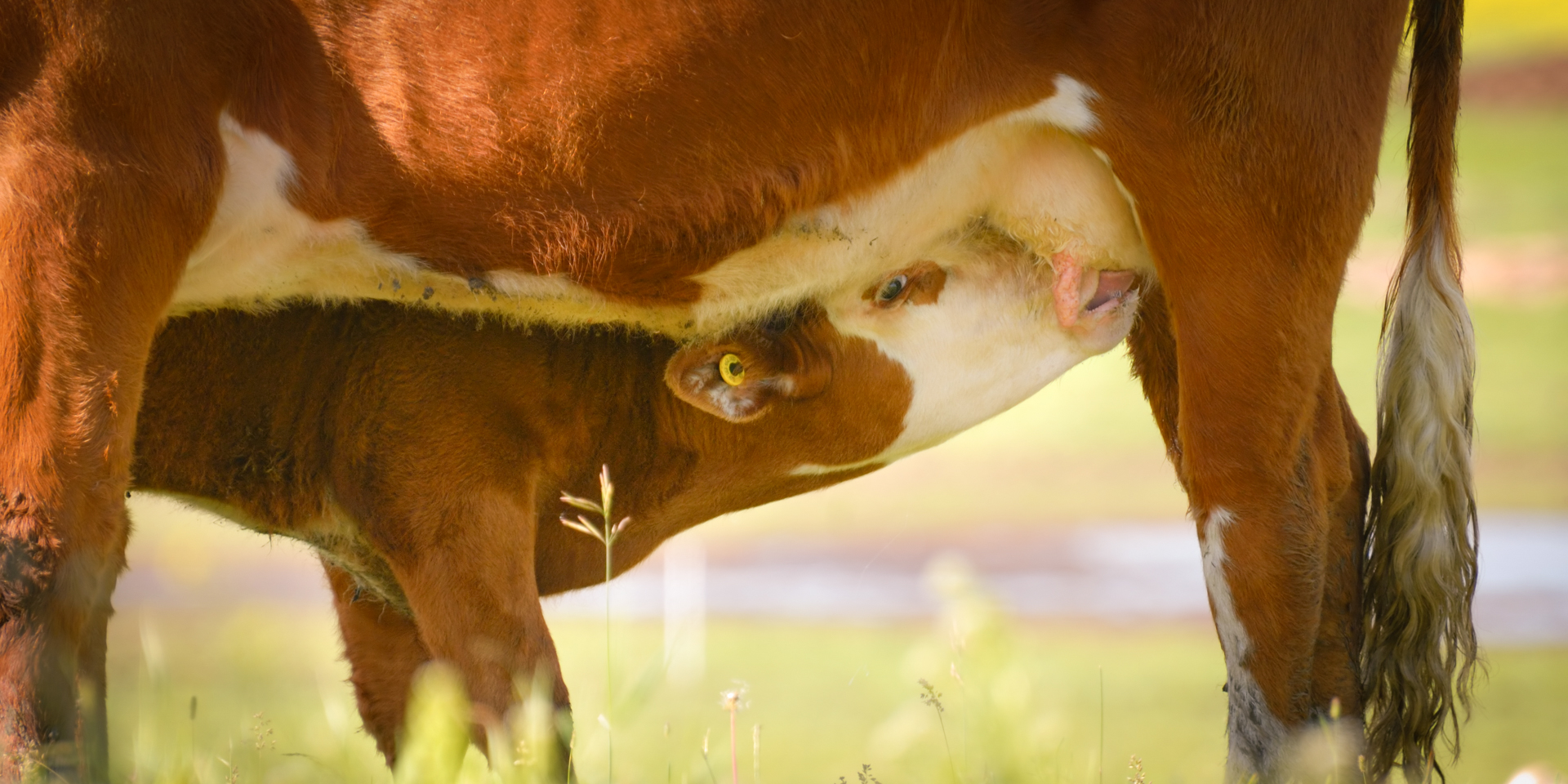
Creep feeding calves when forage is insufficient
Insufficient forage is a significant contributor to poor weight gains in calves. This can be due to poor forage quality, drought conditions, time of year, or simply overgrazing. As a rule of thumb, creep feeding should be considered if the crude protein content of available forage drops below 5%.
Creep feeding calves as a supplement to forage can be one of the best ways to maximize early weight gains and take some pressure off of an overgrazed pasture.
The best growth rates and feed-to-weight conversion ratios are usually available when calves are not reaching their full growth potential with the available forage. As forage improves, the cost-to-benefit ratio of creep feeding calves generally begins to decline.
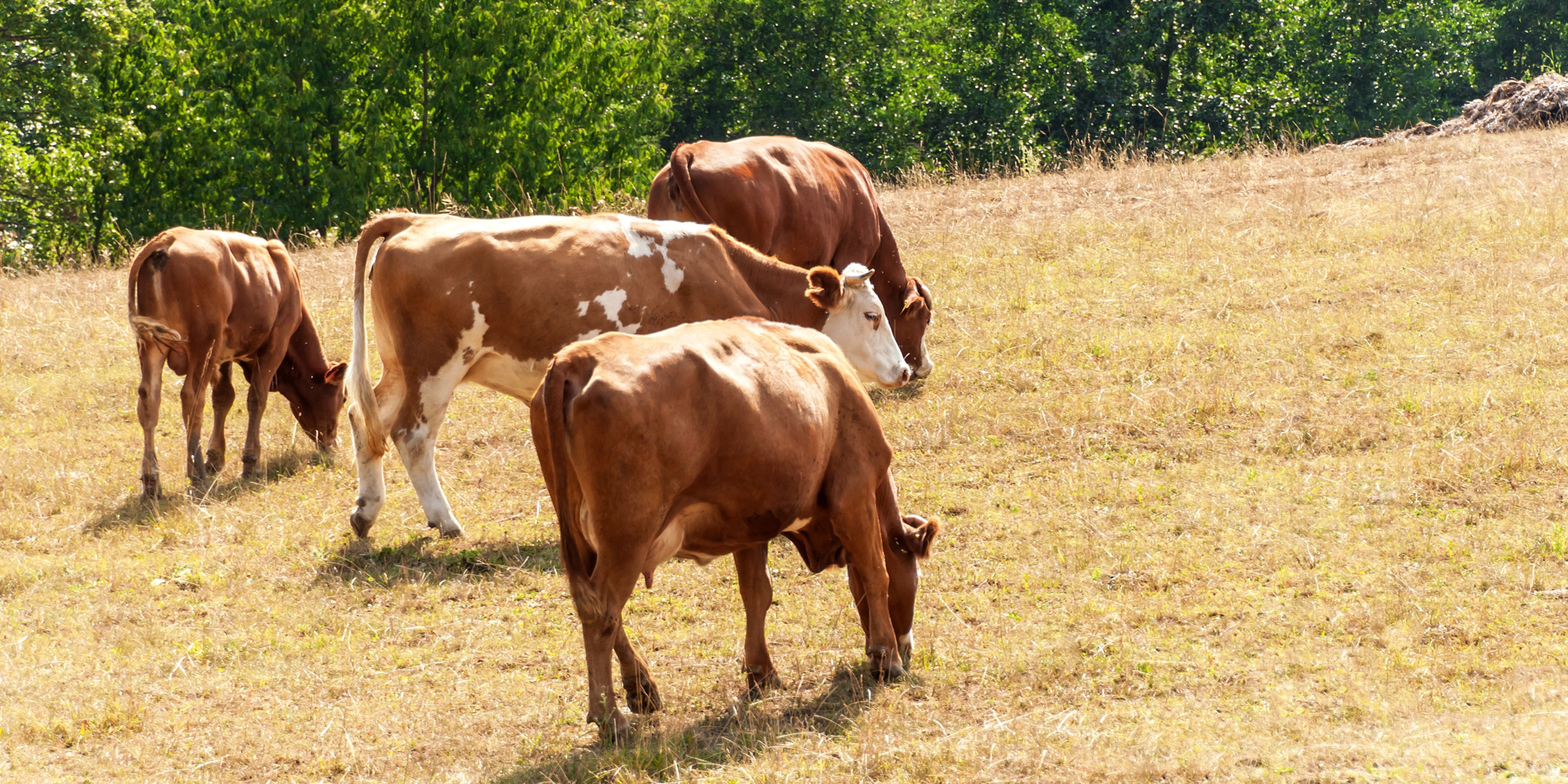
Creep feeding calves when dams have low milk production
Another reason that some calves don’t reach their full growth potential is poor milk production from their dams. In some cases, poor milk production is another side effect of insufficient forage, though it may be chalked up to poor genetics for some cows. Regardless of the cause, poor milk production can lead to calves with lower weaning weights, meaning these calves will require more time and/or feed to catch up.
Supplementing the dam’s milk production with calf creep feeding generally improves weights at weaning for both the dam and the calf.
Creep feeding calves when they will be retained through slaughter
There’s some evidence that suggests creep feeding calves may improve their quality at the time of slaughter. Creep feeding has been found to contribute to better fat marbling and other desirable characteristics.
If calves will be retained through slaughter, creep feeding them early may pay off with better per pound prices when they go to the sale barn after finishing. Some studies suggest that creep feeding could increase the final quality grade by up to 0.01 point per day of creep feeding (meaning a calf creep fed for 100 days could, in theory, move up a full score).
Are there situations where you should not creep feed calves?
There are a few specific situations where creep feeding calves could actually have a net negative effect on the bottom line.
Creep feeding replacement heifer calves
Studies have shown that adding creep feed to the diet of replacement heifers can hurt their later milk production. If heifer calves are fed a high-energy diet, it can result in the growth of fatty tissue in the udder. This fatty tissue can suppress the development of mammary tissues, which in turn will reduce the heifer’s future milk production. In general, creep feed should only be given to replacement heifers in cases where the available forage is not sufficient to meet their normal nutritional requirements as they develop.

Creep feeding calves that will be retained in a stocker program
The data are a bit conflicting here, but some studies show that higher weaning weights due to creep feeding may be lost if a calf is retained through a stocking program and then sold. The best returns on creep feeding are usually seen in a) higher weights if the calf is sold at weaning or b) better meat grades if the animal is retained through slaughter.
One exception may be situations where poor forage or dam milk production would otherwise cause below-average weaning weights. In those cases, creep feeding may simply correct for otherwise low nutrient availability and help the calf enter the stocker program at an average weight.
Strategies for Creep Feeding
The number of calf creep feeding strategies that have been tried over the years is nearly countless! Given the huge number of variables in the creep feeding equation (weather conditions, genetics, feed prices, beef prices, and more), no single strategy can be applied as a “one-size-fits-all” solution. Below are several variables and things to consider as you plan your calf creep feeding strategy.
Types of calf creep feed
Calf creep feeds can be mixed in a variety of different ways depending on the needs of your specific herd, the goals of your creep feeding regimen, and the relative cost of different ingredients during a given year. In general, most creep feed mixes fall into one of two categories: energy creep feeds and protein creep feeds.
High-Energy Creep Feeds
While there is no official definition, high-energy creep feeds are generally defined as mixes containing less than 18-20% crude protein (CP) on a dry-matter basis. High-energy creep feeds have the potential for the largest total weight gain when fed in unlimited amounts.
High-energy creep feeds often contain a large percentage of grains such as corn, barley, or oats. High-energy creep feeds usually see feed conversion ratios of around 8:1 or 9:1, meaning 1 pound of additional calf weight gain for every 8 or 9 pounds of creep feed consumed.
High-Protein Creep Feeds
High-protein creep feeds are those which contain more than 18-20% crude protein (CP) on a dry-matter basis (sometimes as much as 40-50% CP). High-protein creep feeds have the potential for the most efficient weight gain when fed in limited amounts.
High-protein creep feeds contain a large percentage of protein-rich ingredients such as soybean meal or hulls, dehydrated alfalfa pellets, distiller’s dried grains, canola meal, or cottonseed meal. While the ingredients are generally more expensive, high-protein creep feeds have better feed conversion ratios. Feed conversion ratios for high-protein creep feeds average about 4:1, with numbers as low as 2.25:1 being reported in some cases. The addition of ionophores to creep feed (Rumensin and Bovatec are popular options) may also improve feed conversion ratios in some cases.
Creep Grazing
While not creep feeding in the traditional sense, giving calves exclusive access to a separate area of pasture (often through the use of a creep gate or a strand of electric wire just above calf height) can have some of the same benefits as a grain-based creep feed diet. For creep grazing to be effective, the available forage must be fairly high-quality. Popular creep grazing forages include legumes, sorghum-sudangrass, legumes, and annual grasses (during cool season months).
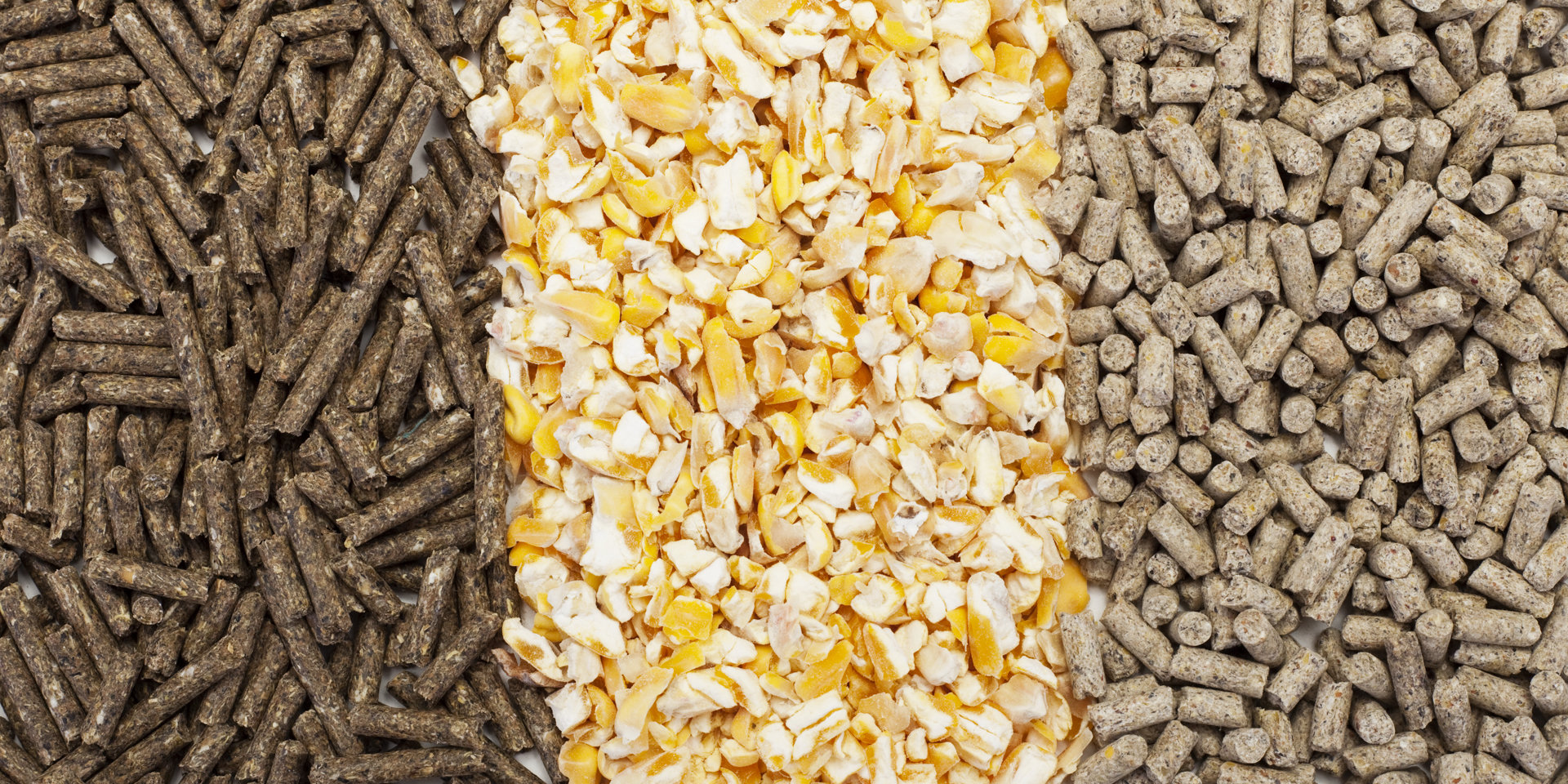
Qualities of a good calf creep feed
To get the best results, a calf creep feed should have several key characteristics.
Protein-rich
Protein content may be the single most important determinant of how well a creep feeding program will perform. The best calf weight gain and feed efficiency numbers are usually achieved with creep feeds that contain at least 18%-20% protein. Protein content in feed is usually measured by crude protein percentage (CP%) in feed analysis.
To give an example, soybean meal (CP 40%-50%) is one of the most common ingredients in high-protein creep feeds. While soybean meal is usually more expensive than most grains (like cracked corn), the added calf weight gains are often so much higher they cover the additional feed expenses and still result in higher profits.
Nutrient-dense
Since calves’ rumens are so small, it’s important that the feed they consume be packed with nutrients. Besides protein, calves need energy to help them assimilate the protein and add weight.
The standard measurement for feed energy content is Total Digestible Nutrients (TDN), which includes protein, digestible fibers, lipids, and carbohydrates. Most calf creep feed mixes are about 60%-80% TDN, with higher-energy mixes often used when feed consumption is limited.You can read more details about crude protein, total digestible nutrients, and other parts of feed analysis here.
Palatable
Just like human kids, calves can sometimes be picky eaters (and have a sweet tooth). Calf creep feed mixes that taste good are easier to get into the calves, so palatability is an important factor. Adding 3%-5% molasses to calf creep feeds is the easiest way to encourage calves to consume the amount they need.
Dust-free
Dusty creep feed results in more waste and, occasionally, upset rumens. Rolling or coarsely grinding grains is one way to keep the dust down and prevent feed waste. The addition of molasses or soybean oil to the calf creep feed mix is another solution to dust.
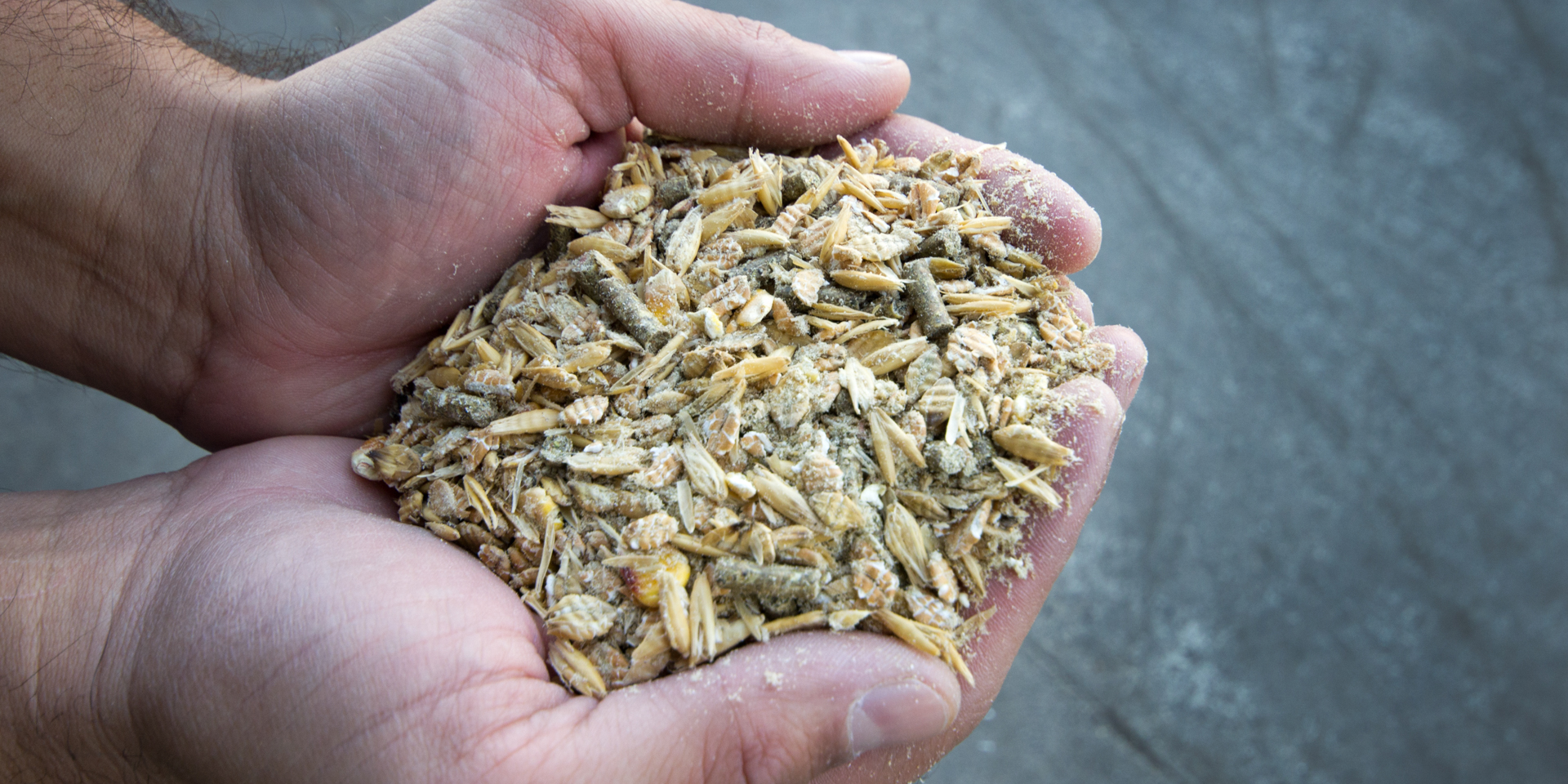
What is creep feed made of?
Calf creep feed can be mixed from a wide variety of components. While premixed creep feeds are available, it can sometimes be more economical to grind and/or mix creep feeds on-site, especially if some of the ingredients are self-produced. Some of the most popular calf creep feed ingredients include:
- Corn (cracked or ground)
- Oats (rolled or whole)
- Barley (rolled or whole)
- Cottonseed meal
- Soybean meal
- Soybean hulls
- Dried distillers grains (DDGS)
- Dehydrated alfalfa pellets
- Wheat
- Sorghum grain
- Field peas
Exact creep feed mixes will often vary based on the local availability of ingredients, the needs of a specific herd, and (most importantly) the relative price of available ingredients.
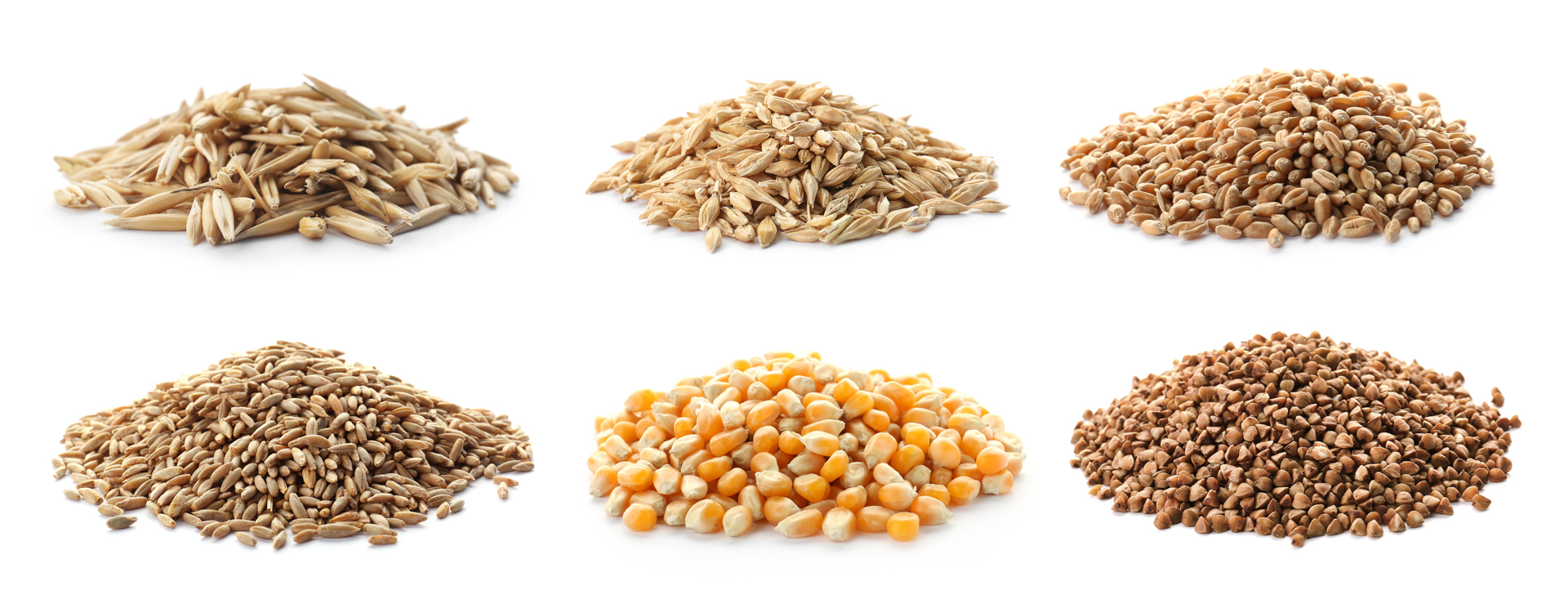
For those who are new to mixing creep feed rations, two numbers are particularly important to track: 1) crude protein (CP) content and 2) total digestible nutrients (TDN). The table below compares the average CP% and TDN% numbers for the most popular creep feed ingredients.
| Feed | CP% | TDN% |
|---|---|---|
| Corn | 10 | 87 |
| Oats | 13 | 83 |
| Wheat | 14 | 86 |
| Barley | 12 | 80 |
| Sorghum | 12 | 86 |
| Field peas | 24 | 80 |
| Cottonseed meal | 44 | 77 |
| Soybean meal | 54 | 75 |
| Soybean hulls | 14 | 75 |
| Dried distillers grains (DDGS) | 29 | 89 |
| Dehydrated alfalfa pellets | 20 | 60 |
There are more extensive comparisons of the nutrient values of various feed ingredients in this article, this article, and this searchable database.
When to start creep feeding calves
Creep feeding calves typically begins when they are around 3-4 months of age. This allows an additional 3-4 months of creep feeding before the calves are weaned around 7 months.
Creep feed may be introduced earlier to allow the calves to become familiar with it, even though it’s not providing significant nutritional value. While calves may begin to sample creep feed as early as 3-4 weeks of age, their rumens are not developed enough to begin digesting it until at least 2 months of age. Calves are usually at least 4 months of age before they can meet all their nutritional requirements with grain-based feeds.
In some cases, creep feeding might be started slightly earlier to prepare for early weaning, which primarily helps to ease the nutritional burden on the dam in cases where forage is poor or dam weight is low.
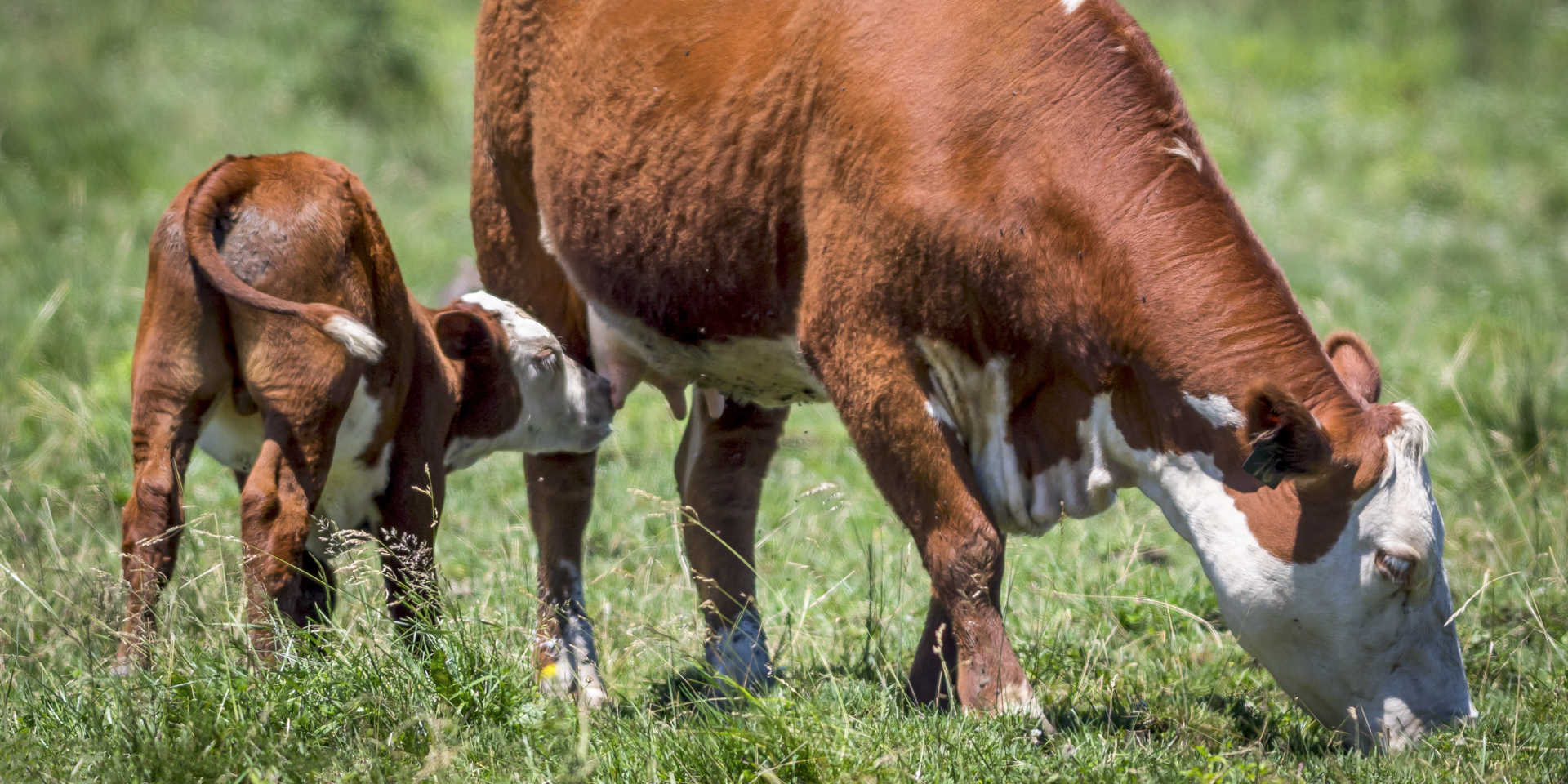
How much creep feed per calf?
There are really two versions of this question:
- “How much creep feed will a calf eat?”
- “How much creep feed should a calf eat?”
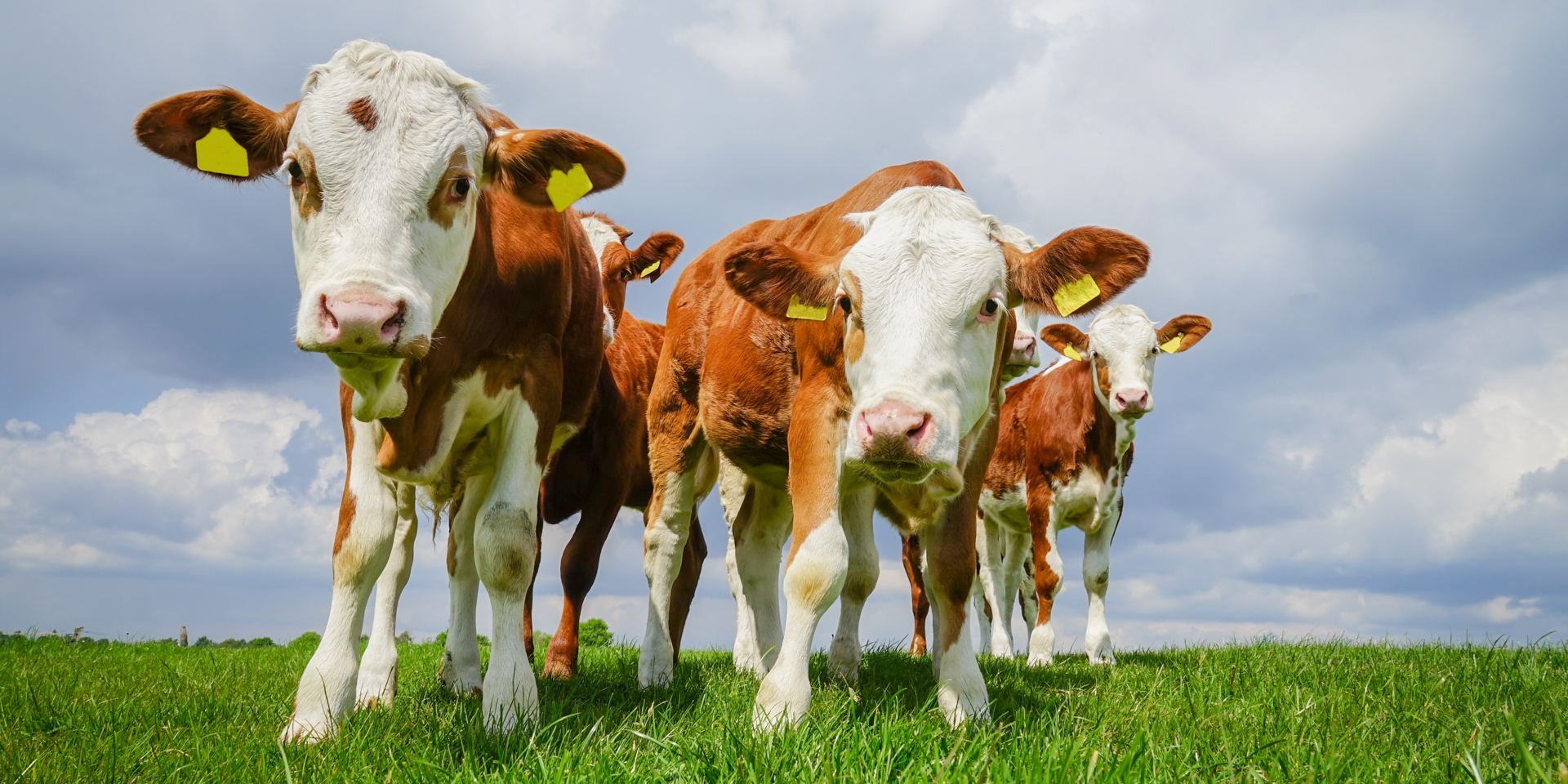
How much creep feed will a calf eat?
If calves are given unlimited access to creep feed, they may eat as much as 7-10 lbs/day per head.
This can be a problem because:
- Calves generally prefer creep feed over forage, meaning forage consumption will decrease as creep feed consumption increases. In one study, calves ate 50% less forage when they had unlimited access to corn-based creep feed. Obviously, replacing cheaper forage with more expensive creep feed isn’t good for the bottom line!
- As creep feed intake increases, feed conversion efficiency usually decreases. The amount of weight gain is less with each successive pound of creep feed that a calf consumes in a day. Again, a decreasing ROI on feed doesn’t help profits!
- Allowing calves to overconsume creep feed can result in fleshier animals, resulting in price discounts at the time of sale.
To solve this problem, creep feed intake must be limited to levels that will give the best feed efficiency (and, ultimately, the most return for the fewest $$). This raises the second question…
How much creep feed should a calf eat?
Recommendations vary, but as a general rule, calves should not consume more than 1% to 1.5% of their body weight in high-energy creep feed per day. If a high-protein creep feed mix is being fed, calves should only eat 1-2 lbs/day per head for optimal feed conversion ratios.
Limiting calf creep feed consumption
To prevent over-consumption, creep feed can be limited using one or both of the following methods:
Adding salt to calf creep feed
The addition of salt to creep feed mixes is the most common method of limiting consumption. Salt (usually white salt) is commonly added in quantities from 3-10%. Ideally, feed consumption should be tracked on an ongoing basis and the amount of salt increased or decreased to maintain the target creep feed consumption rate.
It’s best to avoid commercial pelleted creep feeds if you intend to use salt to limit feed intake, as it can be difficult to mix the salt evenly.
Physically limiting calf creep feed
Some creep feeders (such as the Farmco creep feeder) include a feed control mechanism (shown below) that can be manually adjusted to restrict the flow of feed. This won’t necessarily replace the need for limiting feed with salt, but can be a helpful addition in the feed-control arsenal.
Alternatively, a limited amount of feed can be provided daily at set feeding times. However, this is a more time-consuming approach and is not a common solution.
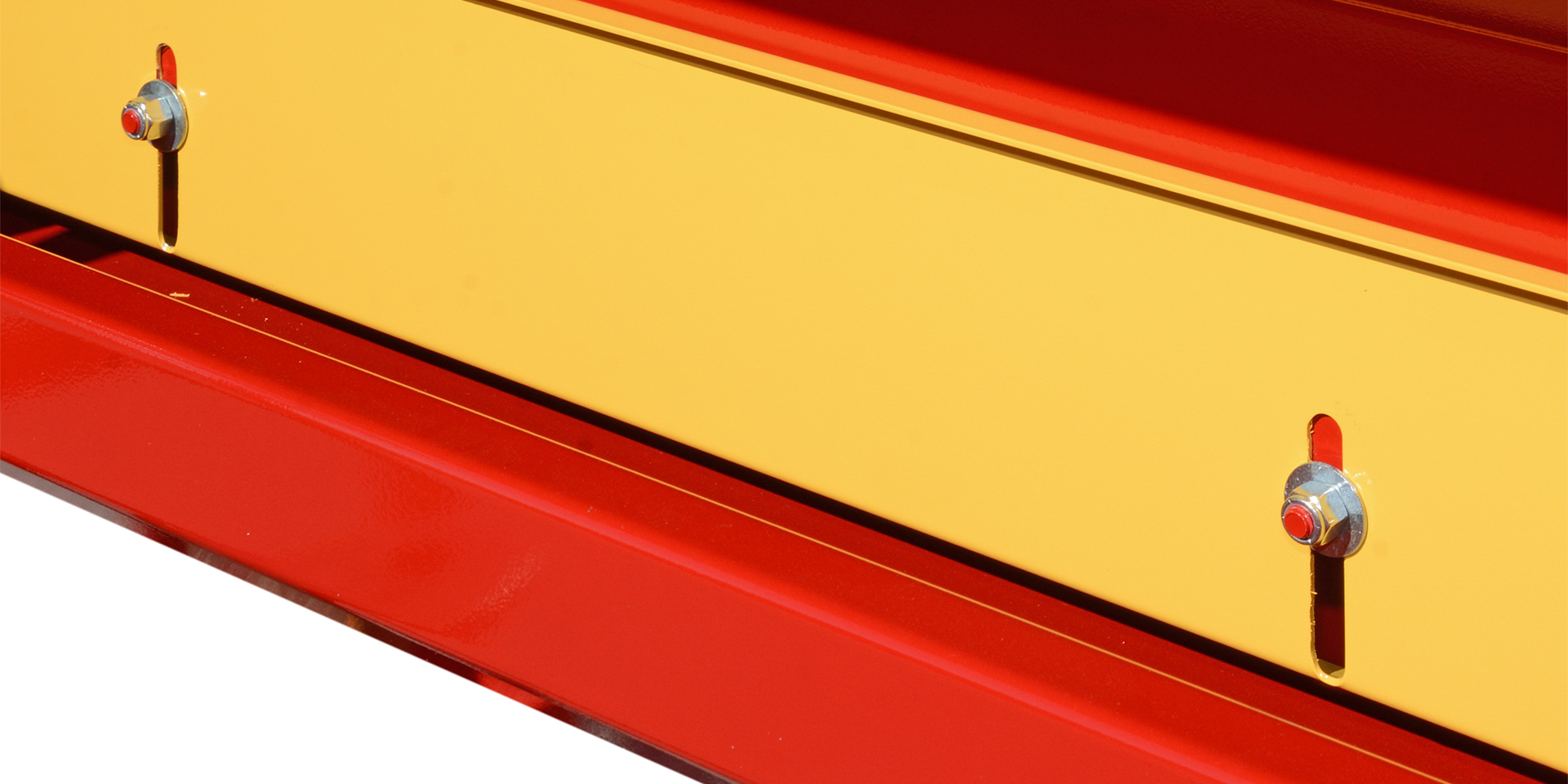
Should I creep feed calves on pasture?
Creep feeding often takes place on pasture. However, the best returns on creep feeding happen when the pasture forage is low-quality or low-quantity.
Keep in mind that calves generally prefer a high-energy creep feed over forage. The risk with creep feeding calves on pasture is that forage consumption will be replaced with creep feed consumption.
One of the best strategies when creep feeding calves on pasture is to feed a high-protein creep feed mix in limited amounts. The goal is for the calves to take most of their energy requirements from forage and milk, while using the protein in the creep feed to boost weight. If high-protein creep feed is overconsumed, the calves’ bodies will begin using the extra protein for energy rather than weight gain, effectively lowering the conversion ratio of the feed.
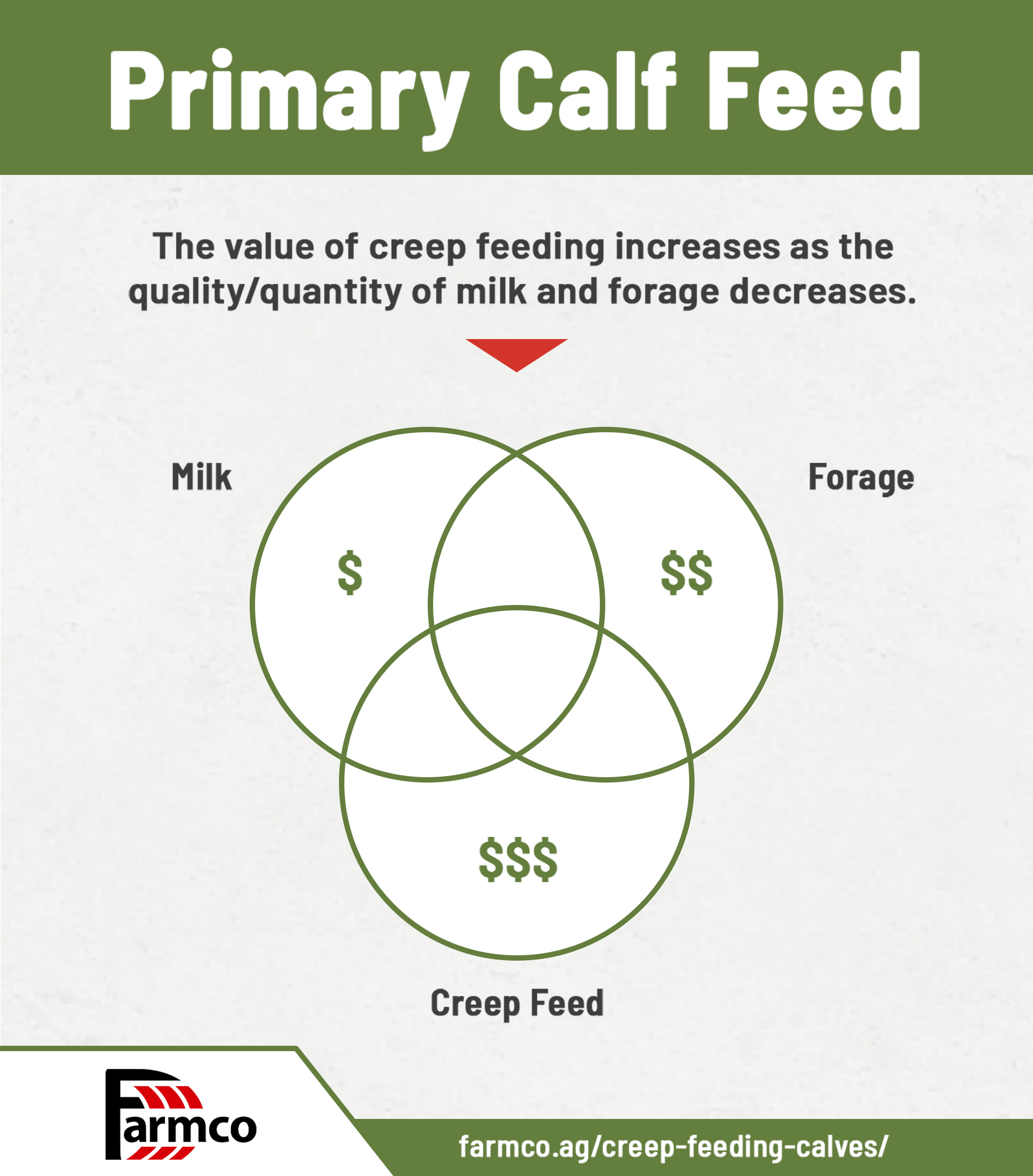
How do I get my calf to eat from a creep feeder?
One of the tricky parts of creep feeding calves is the initial step of getting them comfortable with eating from a creep feeder. Calves are generally pretty wary of any unfamiliar objects in their space, so it can be quite the chore to get them comfortable with actually eating from a creep feeder.
There is no single method that works for all herds 100% of the time, but here are some tricks that are often used to get calves to eat from a creep feeder:
- Place the feeder near the herd’s primary loafing area (shade area, water source, etc). If mom is nearby, calves will be more comfortable exploring the new feeder and beginning to eat from it. This may be just the first step, which can be combined with one or more of the following methods.
- Mix molasses into the feed. Calves love sugars, and adding some sweet-smelling molasses to the creep feed mix can be a great way to get them eating from the feeder. You may want to start with a higher ratio of molasses than what will be used in the final creep feed mix. The molasses can attract flies and get nasty if left too long, so replace high-molasses feeds after a few days if the calves don’t find it.
- “Bait” with feed pans on the ground in the feeder. One trick is to put some feed around the feeder in reach of the dams, then put some pans of feed inside the feeder area where only the calves can reach them. With mom eating just outside, calves are more likely to check out the feed pans in the feeder. Once they’re comfortable inside the feeder, it’s a simple jump to get the calves eating from the feeder trough.
- “Bait” with high-quality hay or a mineral block on the ground in the feeder (learn about the best way to feed hay to cattle). If calves can see something they like inside the creep area of the feeder, they may wander in and then find the feed in the feeder trough.
- Use an older calf that’s already eating from the creep feeder. If younger calves see the “big boys” eating from the feeder, they’ll be quicker to get the idea that they can do it too.
It’s usually best to start with a small amount of creep feed until the calves fine it. Refreshing the feed every few days ensures that calves will want to eat it when they do find it.
Above all, it’s important to be patient. The watched pot never boils and the watched calf never finds the feeder (at least that’s what it can feel like)!
Should I use creep feeders or creep gates for calves?
There are two primary ways of setting up a calf creep feeding station: a purpose-built creep feeder or creep gates to a separate feeding area. Which option is right for you will depend on the needs and setup of your specific operation. Here are some relative benefits of each method to consider.
Creep gates
Creep gates are sometimes also referred to as “creep panels”, “creep feeder panels”, or “calf pass-throughs”. Regardless of the term used, they’re referring to basically the same thing: a welded metal gate or panel that’s designed to allow calves to walk through while keeping larger cattle out. (Note that creep gates or panels are usually incorporated into standalone creep feeder designs.)
Some creep feeding operations set up a designated calf feeding area and limit access to it with creep gates. The feeder itself may be a standard calf bunk feeder or feed pans.
The benefits of using creep gates are:
- Lower costs. Creep gates cost a fraction of what standalone creep feeders do. (At the time of writing a creep gate ran between $170-$380 depending on the length; the cheapest creep feeders started around $800-$900.) If the layout of the pasture or feedlot is suitable, creep gates can be a very inexpensive way to set up a creep feeding area.
- Larger feeding capacity. Most standalone creep feeders can only feed a limited number of calves at a time. Creep gates simply control the flow of calves to the feeding area, theoretically allowing larger groups of calves to be fed simultaneously by adding more feed bunks in the feeding area.
Creep feeders
Creep feeders are usually standalone units that are designed to be placed in the pasture or feedlot. They typically include a bin for bulk feed storage and attached creep gates for allowing only calves to access the feeder. The creep gates built into most creep feeders can be removed or lifted during transport and fixed in place during feeding.
The benefits of using a purpose-built creep feeder are:
- Portable. Most standalone creep feeders are a fully-contained unit (feeder and creep gates together) and are designed so they can quickly be relocated. Some creep feeders include wheels, while others (like the Farmco creep feeder) include skids for dragging with a chain and/or fork pockets for carrying on a loader.
- Manual feed limit. While adding salt is the most common way to limit feed consumption, some creep feeders also feature a manual feed control that can be adjusted to limit the flow of feed to the calves. Creep gates simply control access to the feeder, not the flow of feed itself.
- Weather-proof feed storage. Most creep feeders include a weather-protected feed bin that can be loaded occasionally and slowly dispensed to calves over days or weeks. With creep gates and a bunk feeder, uneaten feed will be exposed to the weather, meaning more frequent feed refills.
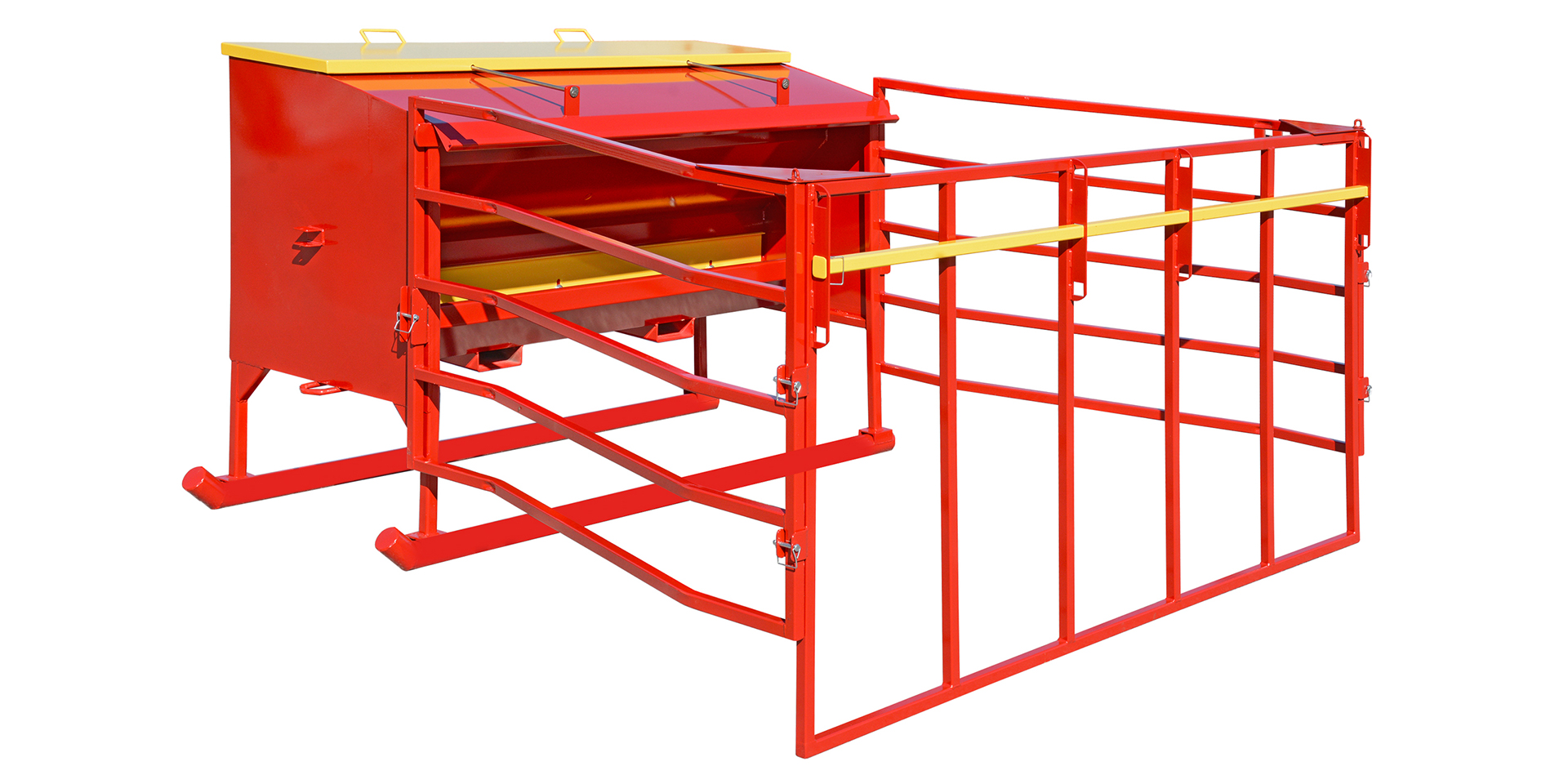
The creep gate vs creep feeder decision really comes down to each specific operation’s needs and layout.
Results of Creep Feeding
At the end of the day, the decision of whether or not to creep feed calves should ultimately be about the bottom line. The returns from creep feeding need to offset the cost of feed and equipment and the time invested. Otherwise, the extra effort is actually losing money for your operation. So…
Does creep feeding calves pay?
It depends. There are several (if not dozens) of variables that can affect the creep feeding equation. The factors with the largest effect on creep feeding profitability are forage quality, CP% of the creep feed, and whether or not daily creep feed intake is limited. Creep feeding may pay very well one year and not pay at all the following year. Here are variables you should consider when creep feeding calves:
- Cattle prices (including price slides or premiums/discounts)
- Number of head
- Days on feed
- Cost of feed
- Feed quality (especially CP% and TDN%)
- Feed conversion ratio (influenced by feed quality, feed quantity, and genetics)
- Forage quality (influenced by forage type, weather conditions, time of year)
- Dam’s milk production (influenced by forage quality, genetics, and age)
- Creep feeder cost (Purchased or rented)
- Additional expenses (fuel, feed additives, labor, etc)
Using a tool like a creep feeding calculator allows you to experiment with changing different variables to see what conditions are needed to make your specific creep feeding operation profitable.
Under what conditions does creep feeding have the most benefit?
Following are some scenarios where creep feeding is likely to have the greatest benefits and be the most profitable.
Creep feeding calves can be profitable when available forage is of low quality/quantity
If calves can’t get enough nutrition from forage (and milk) to maximize their genetic potential for weight gain, creep feeding is often a profitable option. Poor forage has an outsized effect on calf weights because it often contributes to lower milk production for dams, in addition to the direct lack of nutrients calves are receiving from the forage itself.
- Creep feeding calves can be profitable when pasture is poor due to drought conditions.
- Creep feeding calves can be profitable when pasture contains low-nutrient forage varieties.
- Creep feeding calves can be profitable if pasture is overgrazed.
- Creep feeding calves can be profitable for fall-born calves that are ready to go onto pasture as forage quality is declining toward winter.
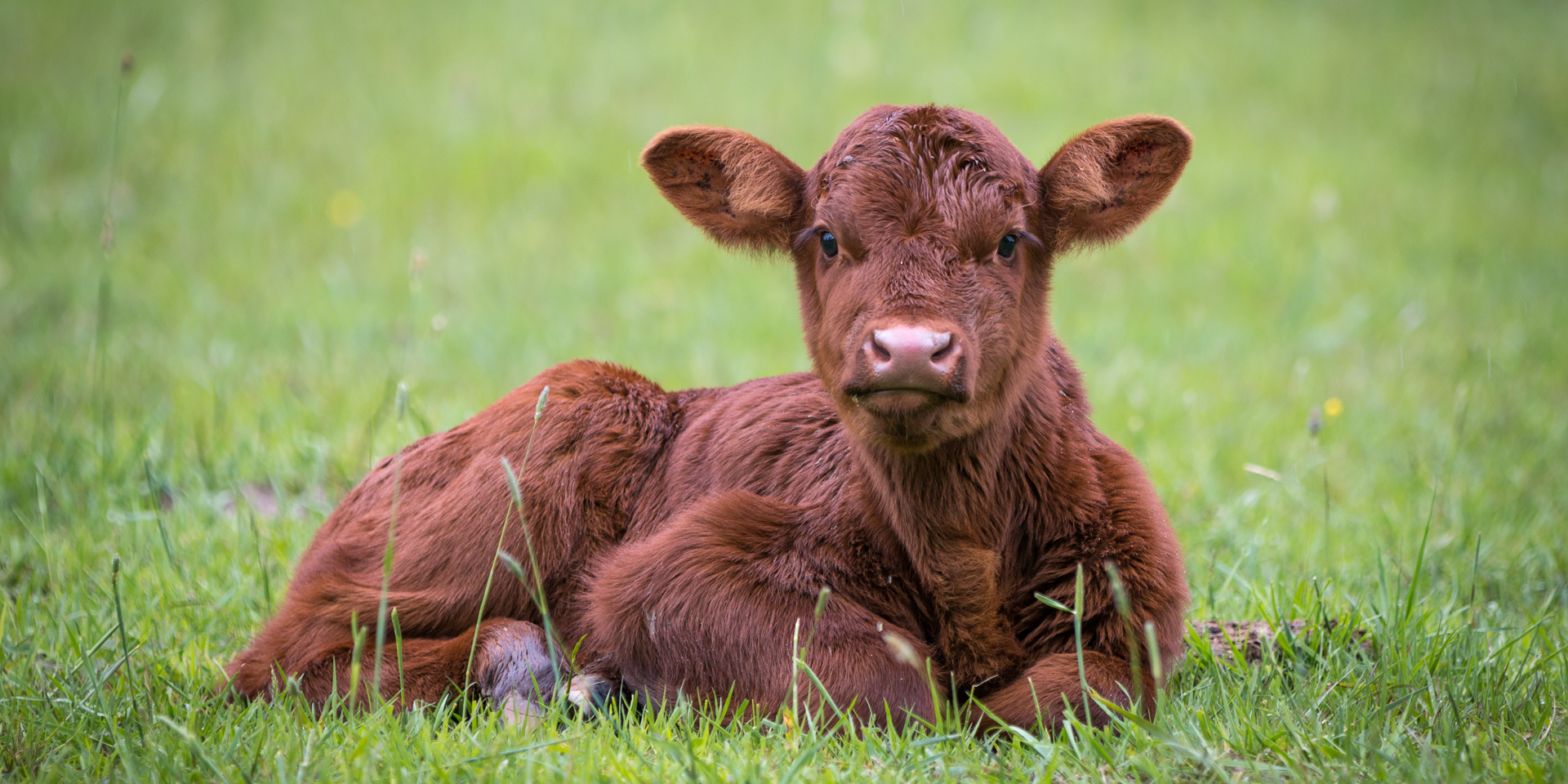
Creep feeding calves can be profitable when creep feed is high in crude protein and fed in limited amounts
Feed conversion ratio (FCR), the primary measurement of creep feeding efficiency, has a major impact on the profitability of a calf creep feeding program. Besides forage availability, the largest effect on FCR generally comes from the crude protein percentage (CP%) of the feed and the daily feed intake that calves are allowed.
- Creep feeding calves is often most profitable if creep feeds have a CP% of at least 18%.
- Creep feeding calves is often most profitable when creep feed intake is limited to 1-2 lbs per day. (This may increase slightly with older calves, but should never exceed 1% of body weight per day.
Experiment with our creep feeding calculator to see what combination of variables gives the best prospect of profitability for your herd.
Conclusion
All-in-all, creep feeding calves is a question of profitability. Will the effects on the bottom line be worth the added cost and effort of creep feeding?
Analyze the variables in your operation and stack as many of them in your favor as possible. Tools such as a creep feeding calculator and feed analysis reports can be useful in evaluating the effect that specific variables may have on feeding outcomes. If you’ve enjoyed this article, you may enjoy our article on bunk feeders for cattle or no waste hay feeders for cattle as well!
Happy feeding!
